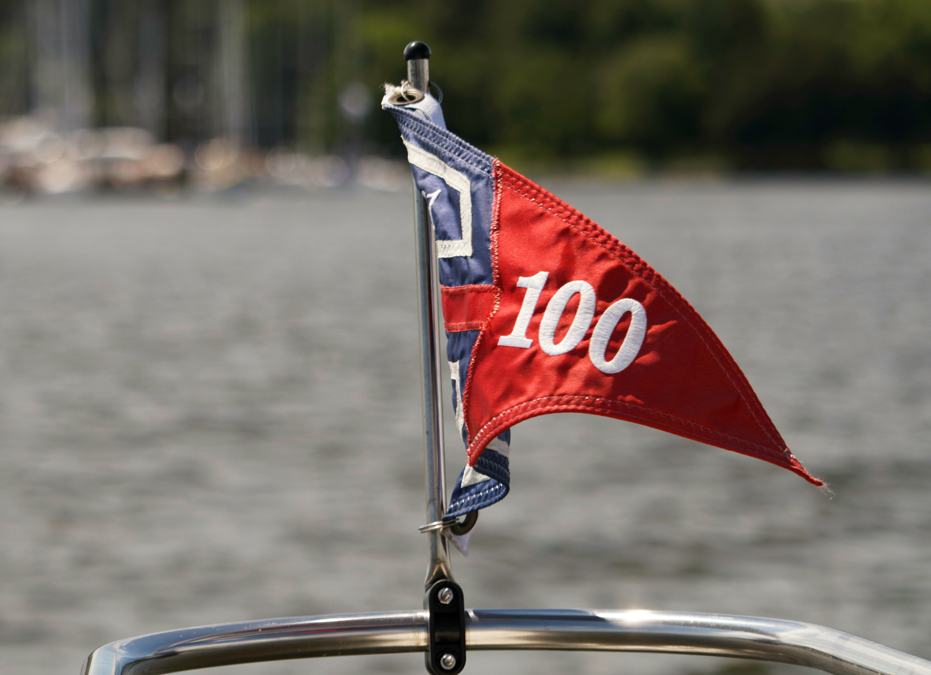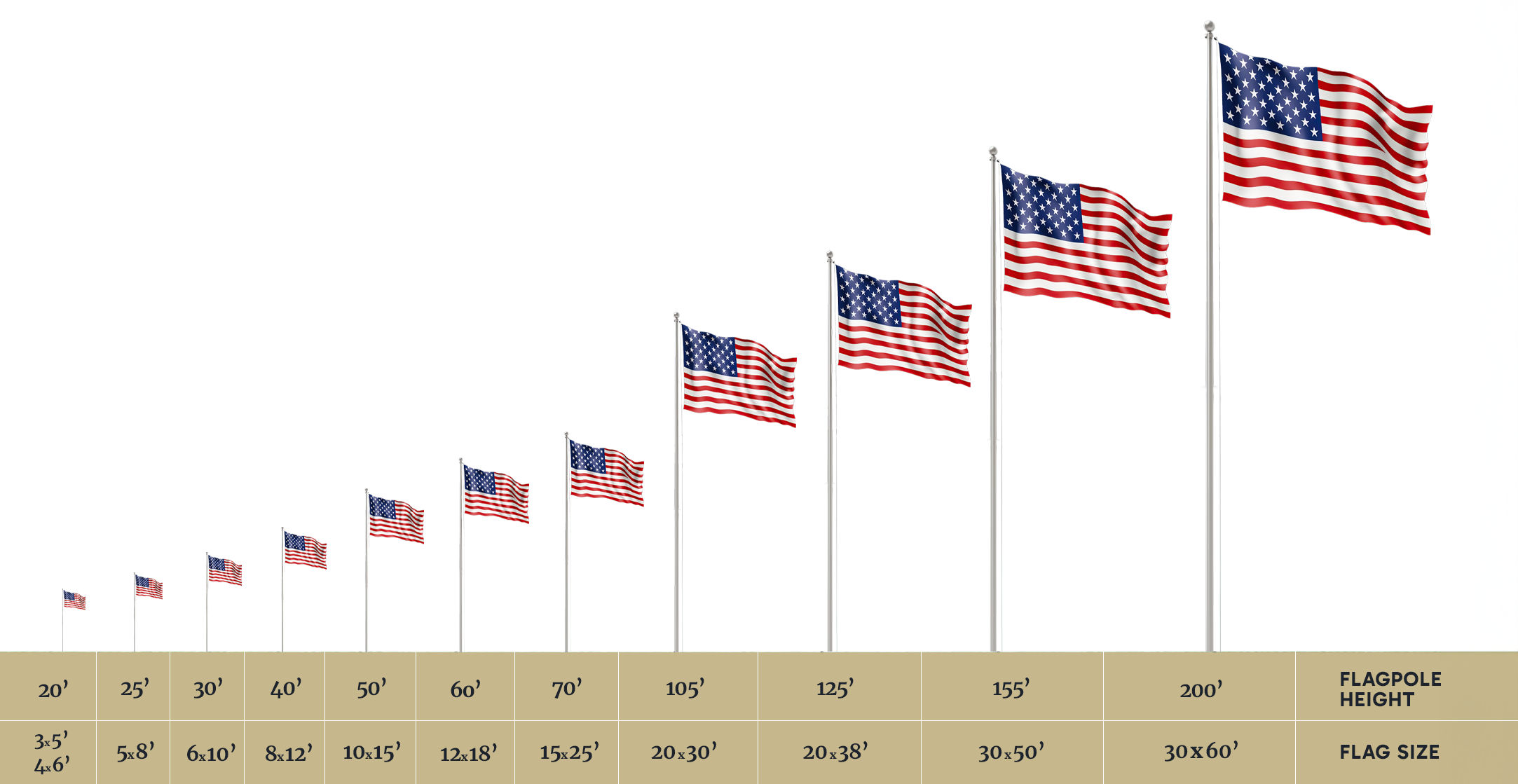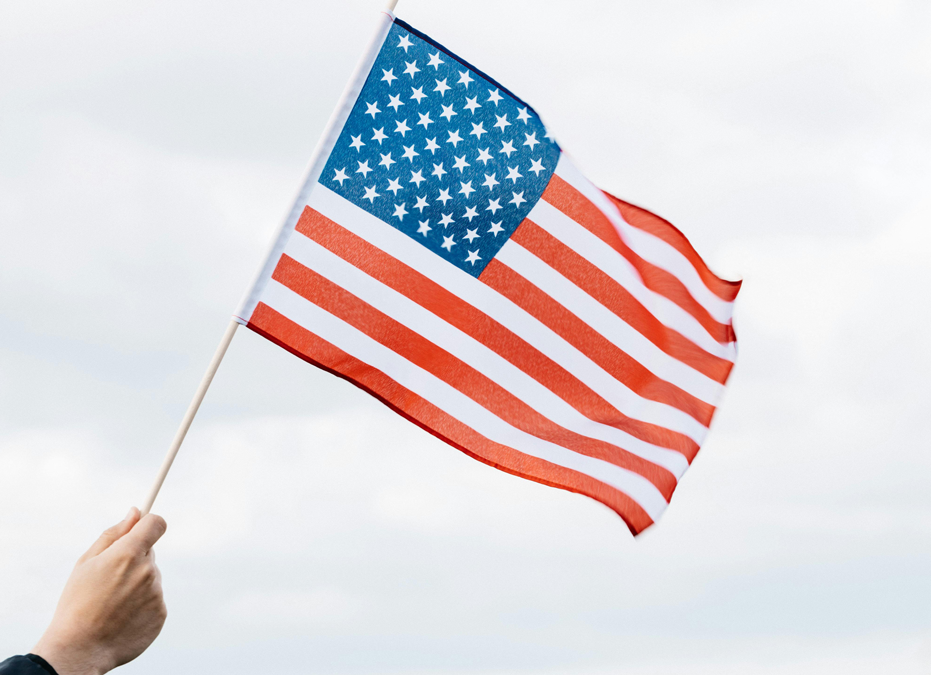ABOUT FLAGS
How to choose the right material and size, how to fly your flag, and more.

Selecting a flag material
At Beaver Flags, we choose flag materials based on the style and intended use of your flag. If we’re creating a custom flag for you, our team can recommend the proper materials to achieve your vision.
Here are some things we consider while choosing materials:
Nylon and polyester are extremely popular flag materials, as their synthetic qualities make them durable, abrasion-resistant, chemical-resistant and weather-resistant. Nylon offers excellent flyability even in light winds.
Cotton is the most traditional fabric for flags. Cotton provides a classic and timeless look, with vibrant colors and a beautiful drape. However, choosing cotton does sacrifice some durability.
NYLON
Why choose Nylon?
- Flexibility of use
- Shiny and brighter with attractive appearance from both sides, with the ability to offer UV protection
- More lightweight material than 2-ply polyester
- Nylon is also usually more cost-effective
- Better for less frequent flying
Challenges of Nylon?
- Not a resilient as polyester
- Regular medium to heavy winds may deteriorate the nylon flag more quickly
Polyester
Why choose Polyester?
- More robust than nylon
- Longer lifespan due to weight of material
- Greater flyability in strong winds
- Dries faster than nylon and will retain color and luster for a longer period of time
- Better for frequent or constant flying
Challenges of Polyester:
- Not be as bright and shiny due to matte finish
- Stronger winds are necessary for flyability
Cotton
Why choose cotton?
- Traditional feel
- Classic look with vibrant colors
- Hangs beautifully with a lovely drape
Challenges of cotton:
- Not as durable for outdoor use

Burgee sizes
There’s a correct flag size for every boat, and that includes burgees. Based on nautical tradition, your burgee size is determined by the size of your boat: either overall vessel length, or the height above the waterline of the tallest mast.
When choosing the size of other flags on your boat, use the concept of “on the fly” ( the total length of your flag), relative to the size of the vessel.
All other flags on power boats should be 5/8 inch on the fly for each foot of overall length. On sailboats, however, they should be 1/2 inch on the fly for each foot above the waterline of the tallest mast on the boat. (That is, if the top of the mast is 30 feet above the waterline, these other flags should be 15 inches on the fly.)
When purchasing a flag, the size of the flag is usually rounded up to the next larger commercially available size, because more often than not, the flags flown by a boat are too small. While a large number of boaters operate a boat that requires a 12 x 18 inch burgee, that burgee would be way too small for a 50' boat. Since proper flag display is one measure of a good seaman, boaters should always obtain and fly properly sized nautical flags.
| Powerboat Length | Burgee Size | Sailboat Mast Height | Burgee Size |
|---|---|---|---|
| up to 24' | 10x15" burgee | up to 30' | 10x15" burgee |
| 25' to 28' | 12x18" burgee | 31' to 36' | 12x18" burgee |
| 29' to 33' | 14x21" burgee | 37' to 42' | 14x21" burgee |
| 34' to 38' | 16x24" burgee | 43' to 48' | 16x24" burgee |
| 39' to 43' | 18x27" burgee | 49' to 54' | 18x27" flag |
| 44' to 48' | 20x30" burgee | 55' to 60' | 20x30" burgee |
| 49' to 72' | 24x36" burgee | 61' to 65' | 24x36" burgee |

U.S. ENSIGN SIZES
The flag at the stern of your boat is either a U.S. ensign, a yacht ensign, or a USPS ensign.
Ensign sizes are also determined by the concept of “on the fly” ( the total length of your flag), relative to the size of the vessel.
A national ensign flown at the flagstaff should be one inch on the fly for each foot of overall length of the vessel. So a 30 foot vessel should fly a national ensign that has at least a 30 inch fly.
The flag at the stern of your boat is either a U.S. ensign, a yacht ensign, or a USPS ensign. A national ensign flown at the flagstaff should be one inch on the fly for each foot of overall length of the vessel. So a 30 foot vessel should fly a national ensign that has at least a 30 inch fly. All other flags on power boats should be 5/8 inch on the fly for each foot of overall length.
| Powerboat or Sailboat Length | U.S. Ensign Size |
|---|---|
| up to 20' | 12x18" flag |
| 21' to 24' | 16x24" flag |
| 25' to 30' | 20x30" flag |
| 31' to 36' | 24x36" flag |
| 37' to 48' | 30x48" flag |
| 49' to 60' | 3x5 ft flag |
| 61' to 72' | 4x6 ft flag |
American Flag Sizes
Use these guidelines to choose the right size of American flag for outdoor use.


American Flag Etiquette & Holidays
According to the U.S. flag code, the American flag should always be treated respectfully and properly displayed. While this is not an exhaustive list, keep these guidelines in mind when flying and caring for your American flag:
Displaying the Flag Outdoors
The flag should be displayed from sunrise to sunset. If displayed at night, it should be properly illuminated. Unless the flag is made for all-weather use, it should not be flown during severe weather.
Displaying the Flag indoors
When displayed against a wall or in a window, the blue field (union) should be at the top and to the observer's left. When displayed on a staff in a church or public auditorium, the flag should hold the position of honor at the clergy member's or speaker's right as they face the audience.
Raising and Lowering the Flag
The flag should be hoisted briskly and lowered slowly and ceremoniously. When flown at half-staff, the flag should be first hoisted to the peak for an instant and then lowered to the half-staff position. It should be again raised to the peak before it is lowered for the day.
Respecting the Flag
The flag should never touch the ground or anything beneath it. It should never be displayed, used or stored in a manner that could lead to damage or soiling. Imagery of the flag should not be used on clothing, napkins, packaging, or anything that is likely to be dirty or discarded after temporary use.
Displaying the Flag in Mourning
The flag is flown at half-staff to honor and pay respect to deceased officials and servicemembers, or after national tragedies.
Disposing of a Worn Flag
When a cotton flag is so worn it is no longer fit to serve as a symbol of the country, it should be destroyed in a dignified way, preferably by burning. Flags made of synthetic materials, like nylon, should not be burned as this may create toxic chemicals. Synthetic flags should be donated or buried respectfully in a wooden container.
American Flag Holidays
In the United States, specific days are designated as flag holidays when the American flag should be displayed prominently. The specific US flag holidays are:
- New Year's Day (January 1)
- Inauguration Day (January 20, every four years, following a presidential election)
- Martin Luther King Jr. Day (Third Monday in January)
- Lincoln's Birthday (February 12)
- Washington's Birthday (Presidents' Day) (Third Monday in February)
- Easter Sunday (Date varies each year)
- Mother's Day (Second Sunday in May)
- Armed Forces Day (Third Saturday in May)
- Memorial Day (Last Monday in May) - The flag is displayed at half-staff until noon, then raised to the top of the staff.
- Flag Day (June 14)
- Father's Day (Third Sunday in June)
- Independence Day (July 4)
- National Korean War Veterans Armistice Day (July 27)
- Labor Day (First Monday in September)
- Patriot Day (September 11) - The flag is displayed at half-staff.
- Constitution Day (September 17)
- Columbus Day (Second Monday in October)
- Navy Day (October 27)
- Veterans Day (November 11)
- Thanksgiving Day (Fourth Thursday in November)
- Pearl Harbor Remembrance Day (December 7) - The flag is displayed at half-staff.
- Christmas Day (December 25)
- State Birthdays (the day each state was admitted to the Union)
The flag should be displayed on days proclaimed by the President of the United States and on state holidays as designated by the states.
